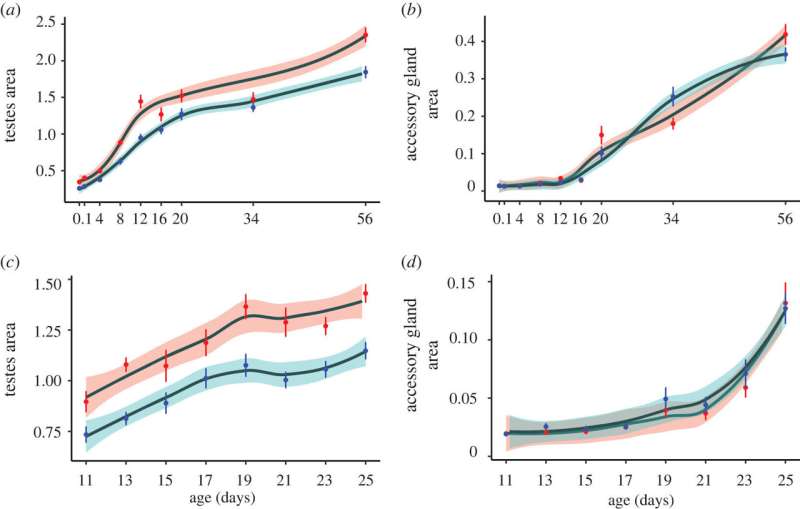November 30, 2022 report
Drive male stalk-eyed flies found to avoid fertility reduction by increasing size of testes

A team of researchers at University College London's Department of Genetics, Evolution and Environment has found that drive male, stalk-eyed flies do not suffer fertility reduction, despite losing half their sperm, by increasing the size of their testes. The group describes their study of the flies and their reproductive physiology in their paper published in the journal Biology Letters.
Prior research has shown that some male creatures have genes that lead them to produce only female offspring鈥攕uch genes prevent the birth of male offspring by killing off (or disabling) sperm carrying a Y chromosome. Such males are called drive males, and quite naturally, they tend to produce far fewer numbers of active sperm.
Prior research has shown that stalk-eyed flies have drive males, and yet somehow, the males still manage to produce as many viable sperm as species that do not have drive males. Intrigued by such an incongruity, the researchers took a closer look to find out what was going on.
Noting that other species compensate for loss of fertility in drive males by having females mate with multiple partners, the researchers looked to see if that might be the case with stalk-eyed flies. They found that not to be the case. They also found that only approximately two-thirds of the males in a given population were drive males.
The drive males had much larger testes than the males non-drive males鈥攖hey were on average 26% bigger. The larger size allowed the drive males to produce twice as many sperm as they normally would, resulting in nearly the same amount of viable sperm as non-drive males. The researchers found that the testes in the drive males also began growing earlier than non-drive males and grew faster, as well.
The researchers were unable to determine what anatomical features allowed only the males that were drive males to grow larger testes, but plan to continue their study to find out. They also plan to see if producing such large testes has any other, possibly negative, consequences for the flies.
More information: Sasha L. Bradshaw et al, Meiotic drive adaptive testes enlargement during early development in the stalk-eyed fly, Biology Letters (2022).
Journal information: Biology Letters
漏 2022 Science X Network





















